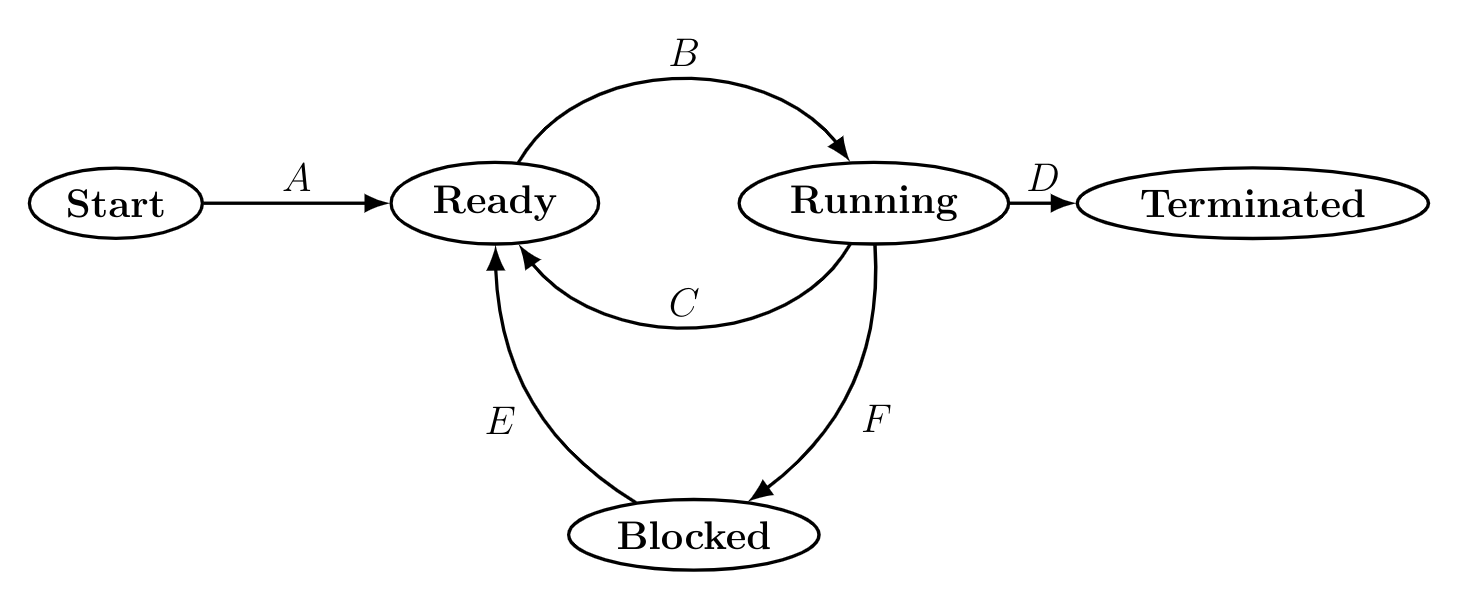In the following process state transition diagram for a uniprocessor system, assume that there are always some processes in the ready state:

Now consider the following statements:
- If a process makes a transition $D$, it would result in another process making transition $A$ immediately.
- A process $P_2$ in blocked state can make transition E while another process $P_1$ is in running state.
- The OS uses preemptive scheduling.
- The OS uses non-preemptive scheduling.
Which of the above statements are TRUE?
- I and II
- I and III
- II and III
- II and IV